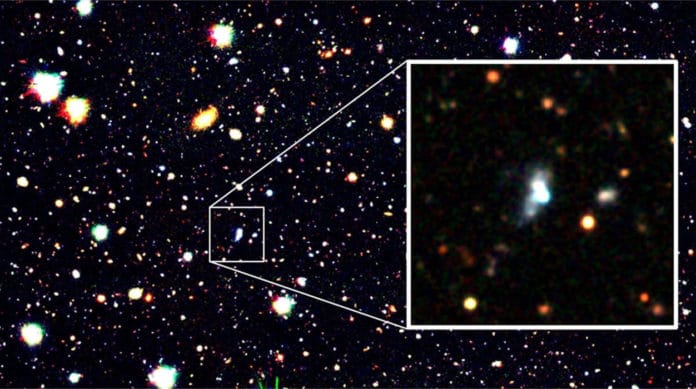To comprehend galaxy evolution, space experts need to examine worlds in different phases of formation and evolution. Most of the galaxies in the modern Universe are mature galaxies. Yet, standard cosmology predicts that there may, in any case, be a few galaxies in the early formation stage in the new Universe. Since these early-stage galaxies are rare, an international research team looked for them in wide-field imaging data taken with the Subaru Telescope.
However, it wasn’t easy to find galaxies in the early stage of galaxy formation from the data because the wide-field data includes as many as 40 million objects.
In a new study, the research developed a new machine learning method to find such galaxies from the vast amount of data. They had a computer repeatedly learn the galaxy colors expected from theoretical models, and then let the computer select only galaxies in the early stage of galaxy formation.
By combining big data captured by the Subaru Telescope and the power of machine learning, scientists have discovered a galaxy with an extremely low oxygen abundance of 1.6% solar abundance, breaking the previous record of the lowest oxygen abundance.
The galaxy named HSC J1631+4426 is located 430 million light-years away in the constellation Hercules. It has an oxygen abundance, only 1.6 percent of that of the Sun. This is the lowest values ever reported for a galaxy.
The measured oxygen abundance suggests that most of the stars in this galaxy formed very recently. In other words, this galaxy is undergoing an early stage of galaxy evolution.
Prof. Ouchi of the National Astronomical Observatory of Japan and the University of Tokyo said, “What is surprising is that the stellar mass of the HSC J1631+4426 galaxy is very small, 0.8 million solar masses. This stellar mass is only about 1/100,000 of our Milky Way galaxy, and comparable to the mass of a star cluster in our Milky Way. This small mass also supports the primordial nature of the HSC J1631+4426 galaxy.”
There are two new indications from this discovery. First, this is the evidence about a galaxy at such an early stage of galaxy evolution existing today. In the framework of the standard cosmology, new galaxies are thought to be born in the present Universe. The discovery of the HSC J1631+4426 galaxy backs up the picture of the standard cosmology. Second, we may witness a new-born galaxy at the latest epoch of cosmic history. The standard cosmology suggests that the matter density of the Universe rapidly drops in our Universe, whose expansion accelerates.
